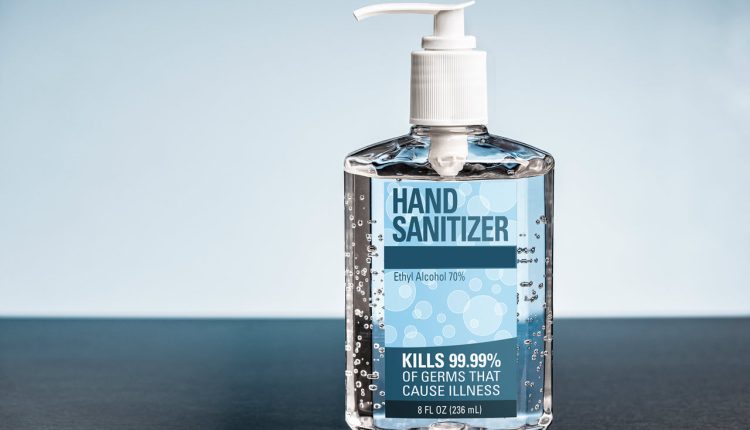Lifestyle-Health
5 dangerous germs that cannot be killed by alcohol-based sanitizers

Since the COVID-19 pandemic, hand sanitizers have become a handbag, office desk, and car essential. They are quick, convenient, and effective against many harmful microbes. However, it’s important to understand their limits.
Alcohol-based sanitisers (with at least 60% alcohol) are excellent at killing many bacteria and viruses, but there are stubborn germs that can survive — making proper handwashing with soap and water the safer choice in many cases.
Here are the major germs that sanitiser struggles to kill, explained in detail.
Germs That Are Not Killed By Sanitizers
1. Norovirus – The “Stomach Flu” That Outwits Sanitiser
Norovirus is one of the most common causes of gastroenteritis, often nicknamed the “winter vomiting bug.” It spreads through contaminated food, surfaces, or person-to-person contact, and it takes only a small number of viral particles to make you sick.
Unlike viruses such as influenza or COVID 19, norovirus does not have a fatty “envelope” for alcohol to break down. Instead, it has a tough protein shell that makes it resistant to sanitisers. This means even generous amounts of sanitiser rubbed on your hands won’t reliably destroy it.
The best defence? Wash hands thoroughly with soap and water, especially after using the toilet or before eating. Soap loosens and rinses the virus particles away, while sanitiser simply leaves them behind.
2. Clostridium difficile (C. diff) – A Hospital Superbug
C. diff is a bacterium that causes severe diarrhoea and potentially life-threatening inflammation of the colon. It is most common in healthcare settings, particularly in patients who have taken antibiotics, which disrupt normal gut bacteria.
The challenge with C. diff is that it forms spores — tough, protective structures that allow it to survive harsh environments, including the alcohol in hand sanitisers. These spores can linger on surfaces for long periods, and when touched, they stick to hands easily.
Hospitals often advise staff, patients, and visitors to prioritise handwashing over sanitiser use when C. diff is present. Soap and water physically remove spores, while sanitiser has little effect.
3. Cryptosporidium – The Parasite in Contaminated Water
Cryptosporidium is a microscopic parasite that causes cryptosporidiosis, a diarrhoeal disease often contracted through swimming in or drinking contaminated water. Outbreaks have been linked to swimming pools, lakes, and even municipal water supplies.
The parasite has a thick outer shell that protects it from chlorine (commonly used in pools) and alcohol-based sanitisers. This makes it especially tricky to eliminate. If you come into contact with contaminated water, sanitiser will not prevent infection — only soap and water can effectively wash the parasite away.
4. Bacterial Spores – Built for Survival
Some bacteria, such as Bacillus anthracis (which causes anthrax) and certain food-poisoning bacteria, form spores. Spores are nature’s survival capsules, designed to withstand extreme conditions such as heat, drought, radiation — and yes, even alcohol-based sanitisers.
Because spores are built with multiple protective layers, alcohol simply cannot penetrate them. This is why in food safety, healthcare, and laboratory settings, handwashing and more powerful disinfectants are needed. Relying solely on sanitiser in such cases provides a false sense of security.
5. Non-Enveloped Viruses – Too Tough for Alcohol
Sanitisers are highly effective against enveloped viruses, like flu and coronaviruses, because alcohol dissolves their fatty outer coating. However, non-enveloped viruses — such as rotavirus, adenovirus, and poliovirus — are far tougher.
These viruses lack the fragile lipid layer that alcohol disrupts. Instead, they are encased in protein shells that resist alcohol damage. As a result, sanitiser only weakly reduces their numbers and is far less reliable at preventing transmission compared to proper soap-and-water washing.
Hand sanitiser is a powerful tool, but it isn’t foolproof. It works brilliantly against everyday germs such as flu viruses, cold viruses, and many bacteria. Yet for harder-to-kill threats like norovirus, C. diff, Cryptosporidium, spores, and non-enveloped viruses, sanitiser falls short.
For true protection:
Use sanitiser when soap and water aren’t available, particularly after touching surfaces in public places.
Always wash hands with soap and water after using the toilet, before eating, and after contact with potentially contaminated environments.
In short: sanitiser is a useful backup, but soap and water will always remain the gold standard in hand hygiene.
-

 Lifestyle-Health4 months ago
Lifestyle-Health4 months agoInvesting ₹10,000 a month via SIP in this mutual fund would have swelled to ₹1.71 crore in 21 years. Check how
-

 Breaking News3 weeks ago
Breaking News3 weeks agoIsrael Names 77 Countries That Boycotted Netanyahu’s UN Speech In Protest Over Gaza War
-

 News In Diaspora4 months ago
News In Diaspora4 months agoHotels and homes on Crete evacuated as wildfire burns out of control
-

 Lifestyle-Health4 months ago
Lifestyle-Health4 months agoMultibagger small-cap stock under ₹50 jumps despite sell-off in Indian stock market
-

 Lifestyle-Health5 months ago
Lifestyle-Health5 months agoOgie Alcasid’s daughter Leila ties the knot in Australia
-

 Lifestyle-Health4 months ago
Lifestyle-Health4 months agoDriving Abroad: These 34 countries accept SA licenses
-

 Lifestyle-Health2 months ago
Lifestyle-Health2 months ago11 signs of growth that you might have missed
-

 Politics5 months ago
Politics5 months agoFinally Federal Government of Nigeria Assures Citizens, Says The President Isn’t Controlled by Any Cabal
-

 Breaking News2 months ago
Breaking News2 months agoVeteran actress, Peju Ogunmola, loses only child, Ayomikun
-

 Lifestyle-Health4 months ago
Lifestyle-Health4 months ago10 Unwritten Rules for Visiting Bali that Travelers Should Know
-

 Lifestyle-Health2 months ago
Lifestyle-Health2 months agoWhen to take time off and focus on yourself and your family
-

 Lifestyle-Health4 months ago
Lifestyle-Health4 months agoAyala, UPC Renewables JV to sell stake in 1 GW projects in $600 mn deal

